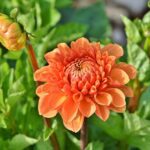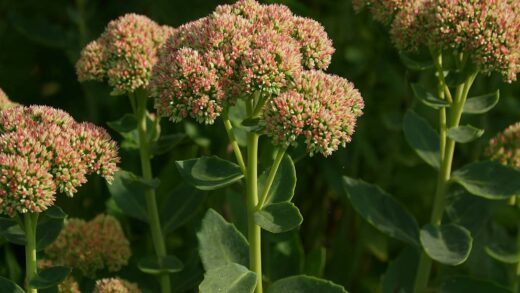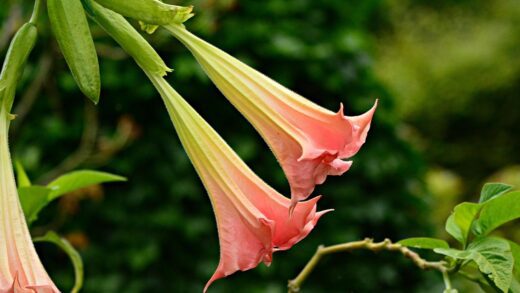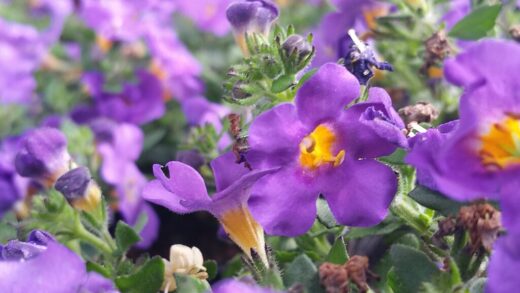The key to correctly watering the Anatolian colchicum lies in a deep understanding of its natural habitat and its unusual, biseasonal growth cycle. This species originates from regions in and around Turkey, which are characterized by wet winters and springs followed by hot, dry summers. Consequently, the plant has evolved to actively grow when moisture is naturally available and to enter a deep dormancy to survive the summer drought. Replicating this “wet-then-dry” cycle is the fundamental principle of successful irrigation for this plant in a garden setting.
During its two active periods—flowering in the autumn and leaf growth in the spring—the Anatolian colchicum requires a consistent supply of moisture to support its development. The soil should be kept evenly moist, similar to a wrung-out sponge, but it should never be allowed to become waterlogged or swampy. In most temperate climates, natural rainfall during these seasons is often sufficient to meet the plant’s needs without supplemental irrigation. However, during unseasonably dry spells in either autumn or spring, you will need to intervene and provide water.
Conversely, the summer dormancy period, which typically begins in June after the foliage has died back, is a time when the plant demands to be kept relatively dry. This is the most critical phase in terms of water management, as the dormant corms are highly susceptible to rot if they are situated in soil that is consistently damp and warm. Excessive summer irrigation is one of the most common reasons for the failure of colchicum in cultivation. Therefore, it is essential to reduce or completely eliminate supplemental watering in the area where they are planted during the summer months.
This distinct wet-dry requirement has significant implications for where you choose to plant them in your garden. They are not suitable for areas that are regularly irrigated throughout the summer, such as alongside thirsty annuals or in a manicured lawn that receives constant watering. Instead, they should be sited in a location, like a dedicated bulb border or among other drought-tolerant perennials, where you have full control over the summer moisture levels and can allow the soil to dry out as nature intended.
Watering during the growth phases
The first active growth phase occurs in autumn when the flowers dramatically emerge from the bare soil. This process requires a significant amount of water to be drawn from the soil to hydrate the cells and push the delicate flower tubes upwards. If the autumn season is particularly dry, the floral display can be diminished, with fewer flowers or blooms that fail to open properly. In the absence of regular rainfall, you should provide a deep, thorough soaking of the soil every week or two to ensure the corms are well-hydrated and can perform at their best.
More articles on this topic
The second, and arguably more critical, period for moisture is the spring, when the broad, strap-like leaves emerge. This foliage is the engine of the plant, responsible for creating all the food reserves that will be stored in the corm to fuel both the summer dormancy and the next autumn’s flowering. To support this vigorous leafy growth, the soil must remain consistently moist from the moment the leaves appear until they begin to naturally yellow. A lack of water during this phase can result in smaller leaves, reduced photosynthesis, and consequently, a weaker flowering display the following autumn.
When providing supplemental irrigation during these active periods, it is always better to water deeply and infrequently rather than lightly and often. A deep soaking encourages the roots to grow further down into the soil profile, making the plant more resilient and less dependent on surface moisture. Use a watering can or a hose with a gentle spray to deliver water directly to the soil around the base of the plant, avoiding spraying the flowers or foliage excessively, which can sometimes encourage fungal issues. The goal is to replenish the soil’s moisture reservoir down to the level of the corm.
Knowing when to water requires careful observation of both the plant and the soil conditions. The best method is to check the soil with your fingers; if the top 3-4 centimeters feel dry to the touch, it is likely time to water. Pay attention to the weather forecast as well, as an impending rain shower can save you the task. The plants themselves may give a subtle sign of thirst with a slight dulling of the leaf color, but it is best to water proactively before any signs of stress become apparent.
The critical summer dormancy period
The summer dormancy is a non-negotiable part of the Anatolian colchicum’s life cycle, and managing water correctly during this time is paramount to its survival. After the spring foliage has completely withered and disappeared, the corm enters a state of rest beneath the soil surface. In its native habitat, this coincides with the onset of the hot, dry summer season, and the plant is evolutionarily adapted to withstand, and even require, this period of dryness. The primary goal for the gardener during summer is to prevent the dormant corm from rotting.
More articles on this topic
The greatest threat to a dormant colchicum corm is the combination of warmth and excessive moisture. This creates the perfect anaerobic conditions for fungal and bacterial pathogens to thrive, which can quickly turn a healthy, firm corm into a soft, decaying mass. Therefore, from the moment the leaves have died back until the first signs of flower emergence in late summer or autumn, supplemental irrigation in the area where they are planted should be ceased. This allows the soil to dry out naturally, mimicking the Mediterranean summer climate the plant expects.
This requirement makes Colchicum cilicicum an unsuitable candidate for planting in areas of the garden that receive regular summer water, such as traditional bedding schemes, vegetable patches, or irrigated lawns. Instead, they are perfectly suited for rock gardens, gravel gardens, mixed borders with other drought-tolerant perennials, or naturalized in grassy areas that are not watered during the summer. Careful planning and placement at the initial planting stage are essential to avoid creating a conflict between the needs of the colchicum and its neighbors.
If your colchicums are planted in a mixed border where some summer watering is unavoidable for the sake of other plants, try to apply water carefully and directly to the base of the neighboring plants, avoiding the area where the colchicum corms are located. Improving soil drainage at the planting stage is also a crucial mitigating factor. A very gritty, porous soil will allow any incidental water to drain away quickly, reducing the risk of the corms sitting in prolonged dampness and succumbing to rot.
The role of soil drainage
While irrigation practices are a significant part of moisture management, the physical properties of the soil itself play an equally vital role in the health of Anatolian colchicum. The importance of excellent soil drainage cannot be overstated. Even with the most careful watering habits, a plant situated in heavy, compacted, water-retentive soil will be at constant risk of corm rot. The soil structure must be such that it allows water to be absorbed during growth periods but enables any excess to drain away freely and quickly.
Ideal soil for this species is a loam or sandy loam that is rich in organic matter. These soil types have a balanced texture that holds enough moisture and nutrients for plant roots but also contains enough large particles (like sand and silt) to create air pockets for good drainage and aeration. If your garden is blessed with such soil, you will have a much easier time managing the water needs of your colchicum. The soil will naturally hold moisture after a spring rain but will also dry out appropriately during a summer dry spell.
For those gardening on heavy clay soil, significant amendment is not just recommended; it is essential. Clay soils are composed of very fine particles that pack together tightly, leaving little room for air and causing water to drain very slowly. To improve this, you must incorporate large quantities of both organic matter (compost, leaf mould) and inorganic grit (coarse sand, fine gravel). The organic matter helps to bind the clay particles into larger crumbs, creating a better structure, while the grit creates permanent channels for water to pass through.
Conversely, very light, sandy soils can also present a challenge, as they may drain too quickly and fail to retain enough moisture during the crucial spring growth phase. In this case, the focus of soil amendment shifts to improving water retention. Adding generous amounts of organic matter, such as compost, coco coir, or well-rotted manure, will help to add body to the soil. These materials act like a sponge, soaking up water and releasing it slowly to the plant roots, preventing the soil from drying out too rapidly between rainfall or watering sessions.
Recognizing signs of water stress
Learning to recognize the signs of both overwatering and underwatering is a valuable skill for any gardener, allowing for timely intervention before serious damage occurs. Overwatering is the far greater danger for Anatolian colchicum, and its primary symptom is rot. While the initial signs are hidden underground, you may notice a complete failure of the corms to produce leaves in the spring after having flowered the previous autumn. If you were to dig up the corm, you would find it to be soft, discolored, and possibly foul-smelling, a clear indication that it has rotted due to excessive moisture.
During the active growth phases, other, more subtle signs of too much water can appear. The leaves in spring might take on a sickly yellow appearance, not to be confused with the natural yellowing of senescence at the end of the season. This chlorosis can indicate that the roots are suffocating in waterlogged soil and are unable to take up nutrients properly. In severe cases, the base of the leaves may become slimy and weak. Similarly, if the autumn flowers appear weak and quickly collapse or rot at the soil line, excessive moisture is a likely culprit.
Underwatering, while less common and less fatal, can also impact the plant’s performance. The most obvious sign during the active growth periods is a wilting or drooping of the foliage or flowers. The leaves may lose their turgidity and glossy appearance, looking dull and lifeless. A lack of water during the spring leaf-growth phase is particularly detrimental, as it can lead to stunted leaves that are unable to produce enough energy. This will directly result in a poor or non-existent floral display in the following autumn.
Another key indicator of underwatering is the quality of the autumn bloom. If the flowers are noticeably smaller than in previous years, if there are fewer of them, or if the buds fail to open fully, it could be a sign that the corm did not receive enough moisture during the critical leaf-development stage the previous spring. By paying close attention to these visual cues and correlating them with your recent weather patterns and watering habits, you can fine-tune your irrigation strategy to provide the perfect amount of moisture at the right times.


















